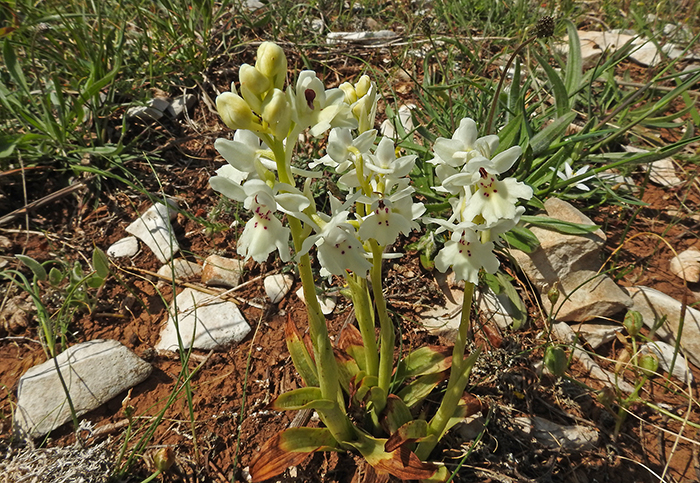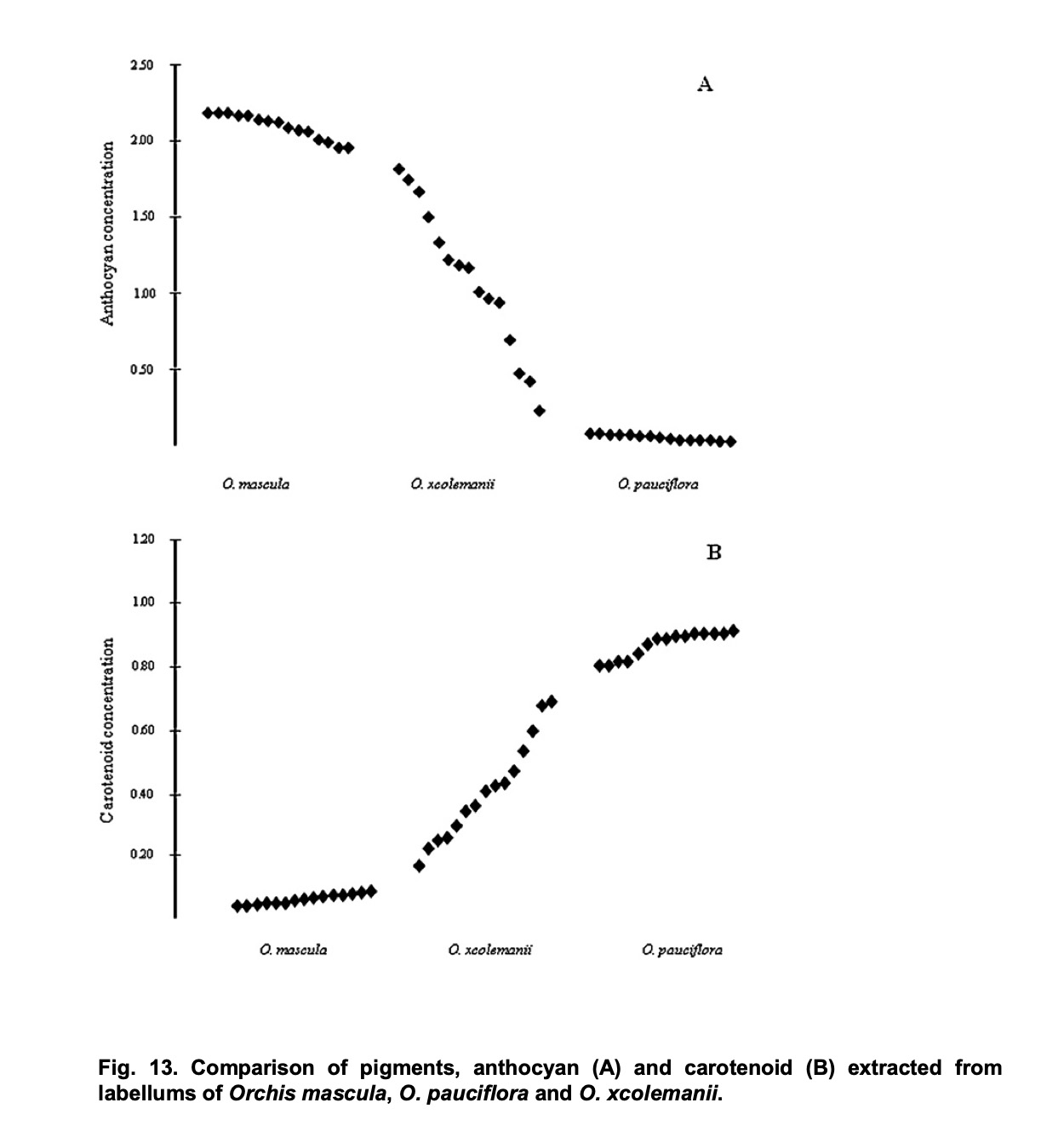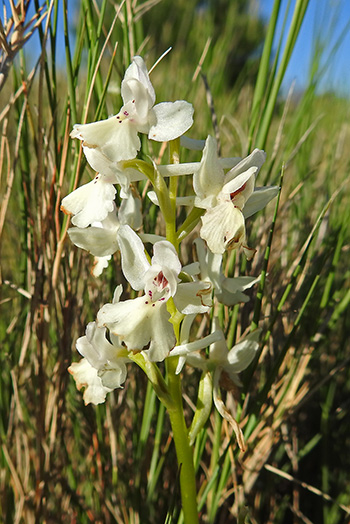
Among a population of about one thousand Orchis pauciflora in Southern Croatia, Bariša Ilić from Metković found 8 plants with almost white flowers. Their bright lips are contrasted with its reddish spots. This is the first time that he observed those special forms at a location near the town of Ston, in Dubrovnik-Neretva county. Bariša Ilić is an ornithologist, who fell in love with native orchids five years ago, as he explains.
The flowers of Orchis pauciflora have a strong yellow color. They contain high concentrations of carotenoids – pigments who create the yellow flower color with many plants. While anthocyanines – which create red, purplish or brownish flower colors – are water soluble, carotenoids are lipid soluble (like chlorophyll). Since anthocyanines are produced in a complex process of biosynthesis with the participation of more than five enzymes, it is more likely that there will be a loss of anthocyanines than it might be in the case of carotenoids. This might explain why Orchis pauciflora with whitish instead of yellow flowers are extremely rare – and even in these findings, the plants seem to have retained a last rest of yellow color in the center of the labellum.
This impression of a gradual loss of carotenoid pigments corresponds with an interesting study of the Italian botanist Alessia Luca. She showed how the concentration of carotenoids is changing in the case of hybrids between Orchis pauciflora and Orchis mascula. Her thesis at the Università della Calabria includes the measuring of anthocyanin and carotenoid concentrations in the labellum of the hybrid plants, Orchis x colemanii. The results show that concentration von carotenoids is gradually decreasing in the hybrids: “O. xcolemanii showed a continuous flower color variation (Figure. 13) ranging from red-purple flowers of O. mascula to yellow flowers of O. pauciflora.” (Alessia Luca: Evolutive significance of hybridization in Mediterranean deceptive orchids, p. 42)

